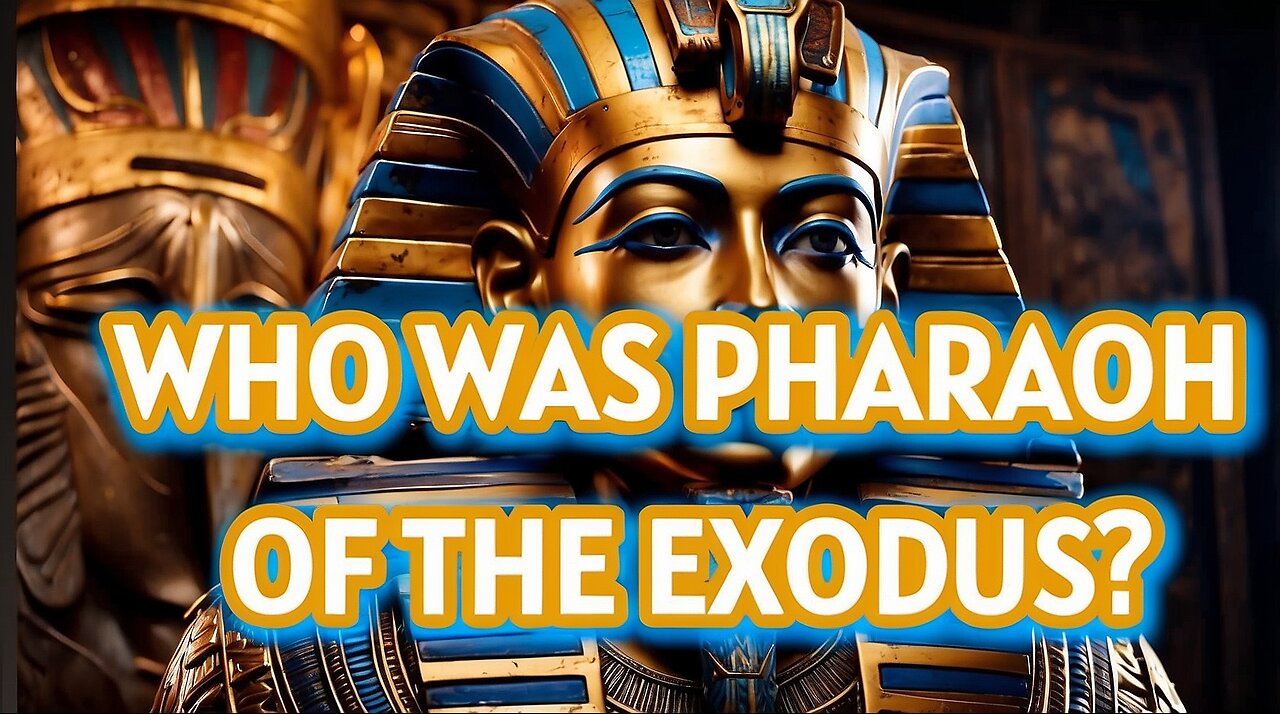Premium Only Content

Countless theories exist about the identity of the pharaoh of the exodus
Identifying the pharaoh during the exodus has been a prolonged challenge that has engaged scholars, archaeologists, and historians for centuries. Several theories have been proposed, with various experts believing it could be pharaohs like Pepi I, Ramesses II, Nechotud, Amenhotep II, among others. The exodus is generally placed within Egypt's New Kingdom period around the 15th century BCE, coinciding with events described in the biblical accounts. The reign of the previous pharaohs, their characteristics, actions, and interrelations often come into scrutiny to pinpoint the possible exodus pharaoh. The biblical timeline places the exodus in the 15th century BCE, within the Thutmose dynasty, further narrowing the search. Thutmose IV stands out with cruel edicts against infants, resembling the biblical account of the pharaoh, ordering Hebrew male children's deaths. The subsequent pharaohs, like Thutmose, are known for expansion projects and potential role in Israel's oppression, Thutmose II, with similar brutal commands as described in Exodus, and Hatshepsut, depicted as a royal daughter with a peaceful reign, but later obscured by the next ruler, are under scrutiny. Thutmose III, with an extensive reign, precedes Amenhotep II, who imported a significant number of Levantine captives during his military campaigns, further intersecting with the exodus narrative. Amenhotep II's actions indicate a considerable number of slaves taken from the Levant, aligning with the biblical story of Israel's enslavement. These in-depth examinations of historical evidence and biblical accounts provide potential insights into the elusive identity of the pharaoh of the exodus.
-
 LIVE
LIVE
tacetmort3m
22 hours ago🔴 LIVE - (MERRY CHRISTMAS) TIME TO SPREAD DEMOCRACY - HELLDIVERS 2 OMENS OF TYRANNY
99 watching -
 12:42
12:42
Cooking with Gruel
21 hours agoBrown Butter Trifle with Salted Caramel and Cinnamon Apple
14.4K3 -
 2:46
2:46
BIG NEM
9 hours agoDiscovering RAKIJA: The Holy Liquer of the Balkans
11.8K2 -
 1:11:38
1:11:38
Film Threat
14 hours agoCHRISTMAS DAY CHILL STREAM WITH CHRIS GORE | Hollywood on the Rocks
134K30 -
 14:22:40
14:22:40
The Quartering
1 day agoYule Log Christmas MAGA Edition With Memes! Come Hang Out!
224K29 -
 38:41
38:41
MYLUNCHBREAK CHANNEL PAGE
1 day agoTimeline Begins in 1800? - Pt 1 & 2
104K56 -
 1:23:41
1:23:41
Game On!
1 day ago $13.56 earnedNetflix NFL Christmas Games Preview and Predictions!
91.2K12 -
 2:05:07
2:05:07
Darkhorse Podcast
1 day agoWhy Trump Wants Greenland: The 257th Evolutionary Lens with Bret Weinstein and Heather Heying
319K877 -
 8:50:58
8:50:58
Right Side Broadcasting Network
1 day ago🎅 LIVE: Tracking Santa on Christmas Eve 2024 NORAD Santa Tracker 🎅
417K65 -
 2:48
2:48
Steven Crowder
1 day agoCROWDER CLASSICS: What’s This? | Nightmare Before Kwanzaa (Nightmare Before Christmas Parody)
366K13